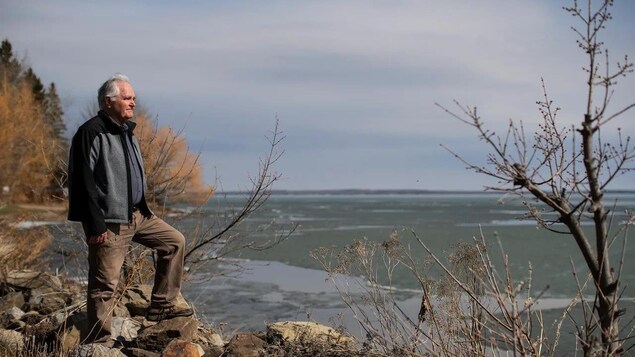The company G&S Cattle de Ponoka filed a proposal with the Alberta Natural Resources Conservation Council to expand its feedlot located nearly 4 km from Pigeon Lake. The company wants to add 4,000 cattle to its operation, which already has 1,000.
These new animals would produce approximately 36 tons of manure per day which will be dispersed over 1000 hectares, or nearly 6% of the entire lake catchment area.
Residents believe that the plan of G&S Cattle must not be approved by the provincial environmental assessment agency.
I haven’t seen so much worry since I’ve been at the lake […] everyone is concerned about the issue
said Don Davidson, mayor of the lakeside summer village Grandview.
An already precarious lake
Residents are concerned about the health of the lake in particular because of the geography of the body of water. The lake, which is in a valley, is filled by runoff from the surrounding land while being drained by a small stream.
The lake located in the counties of Leduc and Wetaskiwin is therefore vulnerable since its waters can stagnate within it for up to 100 years, according to studies.
In the past, nutrients from fertilizers and sewage led to foul-smelling algae blooms that clog shorelines.
We received seaweed advisories almost every year
explained Don Davidson.
Residents then worked to better protect the lake. The use of chemical fertilizers was banned, septic tanks were replaced, and lakeside municipalities spent more than $30 million on wastewater treatment.
We have seen a reduction in the number of algae alerts and the severity of blooms
said Don Davidson.
Greg Thalen, director of G&S Cattledeclined a request for an interview on the matter.
Concerns about possible contamination
According to research by former Alberta Environment Conservation Officer for Pigeon Lake, Jeannette Hall, there is a link between cattle farms and nutrients in the water.
Research conducted for the management plan concludes that nearly 25% of the phosphorus in the lake comes from stream runoff, while about 5% comes from residential areas.
Thus, according to Jeannette Hall, the streams that drain from parts of the watershed without cattle farming carry nearly 50 kilograms of phosphorus into the lake each year. The two streams near cattle ranches carry about 1,000 kilograms of phosphorus into the lake.
It is obvious. Feedlots are the biggest contributors
she says.
The Pigeon Lake Watershed Association filed a statement of concern with the Natural Resources Conservation Council, as did more than 300 residents.
Applications to the agency are assessed against standards to ensure that feedlots do not contaminate groundwater, have adequate runoff controls, and are far enough away from plans of water and neighbors.
Once the decision has been made, those deemed directly affected by it can appeal. A review panel may then convene a public hearing.
The committee should decide on the request for G&S Cattle in mid-May.
Reference-ici.radio-canada.ca
